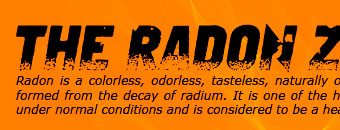 |
 |
 |
||||
|
||||||
| Call: 417-844-0942 | ||||||
|
»Phosphogypsum This page discusses the creation and disposal of the radioactive waste phosphogypsum. Overview Fertilizer is added to soil to improve the quality or quantity of plant growth. Natural fertilizer is composed primarily of manure. While man-made fertilizer contains the same main components of manure, man-made fertilizer ingredients are always consistent and are formulated to produce the best results from plants. One of these components, phosphorous, is inserted into the man-made fertilizer through a process that leaves behind a radioactive waste called phosphogypsum. Phosphate ore – the source for phosphorous – is recovered by open pit mining. The rock is transported to a washing facility, separated from accompanying soil, and processed. To get the phosphorous into a water-soluble form that the plants will absorb, the phosphate is converted into phosphoric acid. Phosphogypsum, the byproduct from this conversion, contains uranium and radium. The radium is of particular concern because it decays to form radon, a cancer-causing, radioactive gas. Phosphogypsum is virtually useless, and is disposed of in large, aboveground stacks, or piles. A total of 63 phosphogypsum stacks were identified nationwide in 1989, in 12 different states. Two-thirds of these stacks were located in Florida, Texas, Illinois, and Louisiana. In Central Florida, one of the major phosphoric acid producing areas, the industry generates about 32 million metric tons of phosphogypsum each year, which equals the combined weight of approximately 6.4 million elephants. |
|
|||||